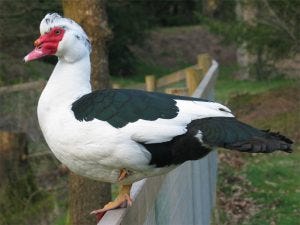Content Spotlight
Podcast: MilliporeSigma says education vital to creating unbreakable chain for sustainability
MilliporeSigma discusses the importance of people, education, and the benefits of embracing discomfort to bolster sustainability efforts.

Vaccitech has licensed the AGE1.CR duck retina cell line from ProBioGen to manufacture its viral vectored vaccines.
The deal will see University of Oxford’s Jenner Institute spin-out Vaccitech gain access to ProBioGen’s technology platform based on the AGE1.CR duck retina cell line for production of its viral vectored universal flu vaccine.
“We generated the AGE1.CR cell line from an embryonated Muscovy duck egg,” Ingo Jordan, director of Vaccine Strategies at ProBioGen told Bioprocess Insider. This, he explained, makes it well suited to vaccine and gene therapy development.

The AGE1.CR cell line is generated from an embryonated Muscovy duck egg. Image: Wikimedia/creative commons Gmhogervorst
“Viral vectors are weak (attenuated) strains of viruses that encode recombinant antigens of pathogens. Application of the vector trains the immune system of vaccine recipients to fight the pathogen. In the case of Vaccitech, one attenuated vector is modified vaccinia virus Ankara (MVA) and the antigen of the pathogen is derived from influenza A virus (NP + M1).
“There are different methods to attenuate viruses and one way is to change the host range. Specific for our case, MVA replicates in avian cells but not in human cells. If given to human recipients, MVA expresses the desired antigen and mimics an infection. This is an extremely efficient way to vaccinate and yet, because MVA cannot replicate in human cells, this vaccine can be given safely even to immunocompromized patients.
“However, because of the attenuation and narrow host range one cannot use conventional cells (such as CHO or HEK 293 that are often mentioned in the biopharmaceutical industry) for production of MVA-based vaccines.”
According to Jordan, the conventional technology is to produce on chicken embryo fibroblasts (CEFs).
He added the AGE1.CR cell line has been tested exhaustively against many different pathogens according to regulatory specifications and yields for MVA are higher in the cell line compared to CEFs.
“We used a duck, and not a chicken, to generate the cell line because duck cells do not contain the endogenous retroviruses that may contaminate vaccine batches.”
Financials of the Vaccitech deal have not been divulged.
You May Also Like